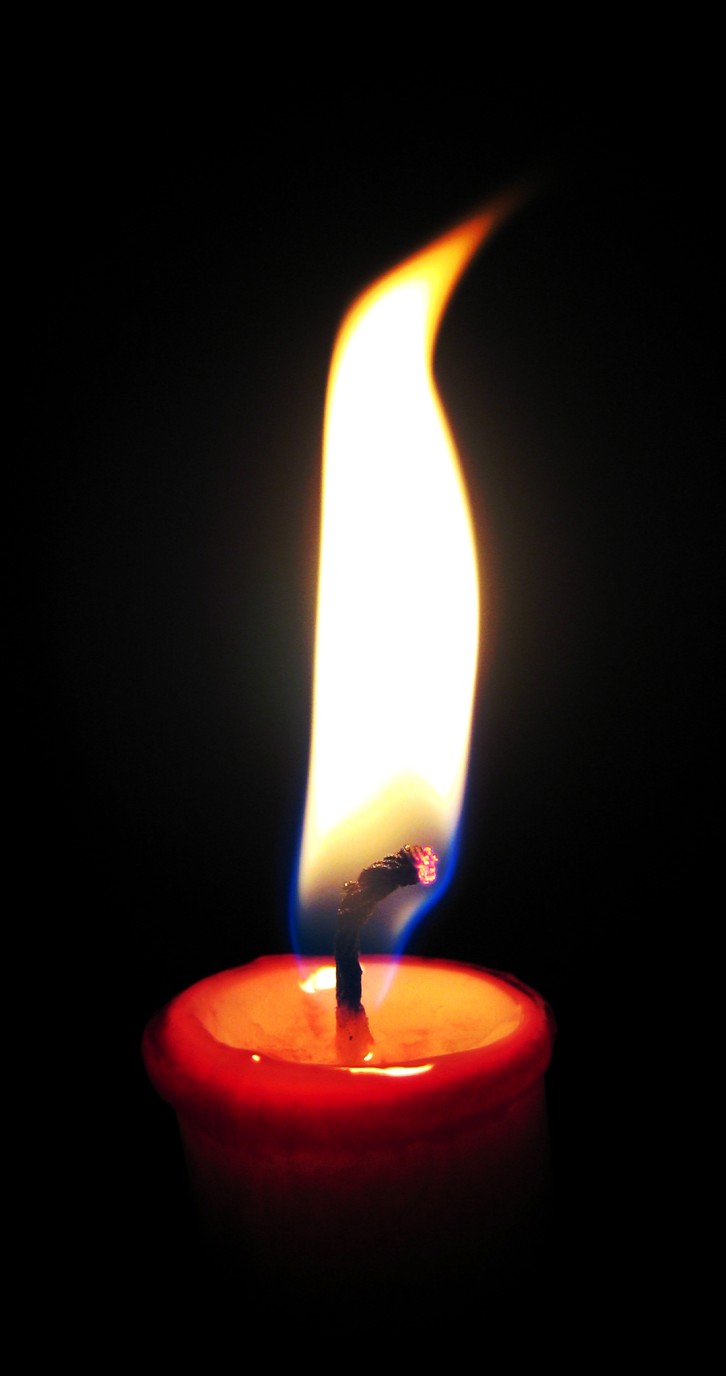diffusion flame on:
[Wikipedia]
[Google]
[Amazon]
 In
In 
File:Australia Cairns Flame.jpg, A nearly- turbulent diffusion flame
File:Candlespace.jpg, A candle in a microgravity environment. This is a rare example of a diffusion flame which does not produce much soot and does not therefore have a typical yellow flame
Diffusion flames in microgravity
Diffusion and edge flames in opposed-jet burners
Fire Combustion engineering
 In
In combustion
Combustion, or burning, is a high-temperature exothermic redox chemical reaction between a fuel (the reductant) and an oxidant, usually atmospheric oxygen, that produces oxidized, often gaseous products, in a mixture termed as smoke. Combustion ...
, a diffusion flame is a flame in which the oxidizer and fuel
A fuel is any material that can be made to react with other substances so that it releases energy as thermal energy or to be used for work (physics), work. The concept was originally applied solely to those materials capable of releasing chem ...
are separated before burning. Contrary to its name, a diffusion flame involves both diffusion
Diffusion is the net movement of anything (for example, atoms, ions, molecules, energy) generally from a region of higher concentration to a region of lower concentration. Diffusion is driven by a gradient in Gibbs free energy or chemical p ...
and convection processes. The name diffusion flame was first suggested by S.P. Burke and T.E.W. Schumann in 1928, to differentiate from premixed flame where fuel and oxidizer are premixed prior to burning. The diffusion flame is also referred to as nonpremixed flame. The burning rate is however still limited by the rate of diffusion. Diffusion flames tend to burn slower and to produce more soot than premixed flames because there may not be sufficient oxidizer for the reaction to go to completion, although there are some exceptions to the rule. The soot typically produced in a diffusion flame becomes incandescent from the heat of the flame and lends the flame its readily identifiable orange-yellow color. Diffusion flames tend to have a less-localized flame front than premixed flames.
The contexts for diffusion may vary somewhat. For instance, a candle
A candle is an ignitable candle wick, wick embedded in wax, or another flammable solid substance such as tallow, that provides light, and in some cases, a Aroma compound, fragrance. A candle can also provide heat or a method of keeping time. ...
uses the heat of the flame itself to vaporize its wax fuel and the oxidizer (oxygen
Oxygen is a chemical element; it has chemical symbol, symbol O and atomic number 8. It is a member of the chalcogen group (periodic table), group in the periodic table, a highly reactivity (chemistry), reactive nonmetal (chemistry), non ...
) diffuses into the flame from the surrounding air, while a gaslight flame (or the safety flame of a Bunsen burner) uses fuel already in the form of a vapor.
Diffusion flames are often studied in counter flow (also called opposed jet) burners. Their interest is due to possible application in the flamelet model for turbulent combustion. Furthermore they provide a convenient way to examine strained flames and flames with holes. These are also known under the name of "edge flames", characterized by a local extinction on their axis because of the high strain rates in the vicinity of the stagnation point.
Diffusion flames have an entirely different appearance in a microgravity environment. There is no convection
Convection is single or Multiphase flow, multiphase fluid flow that occurs Spontaneous process, spontaneously through the combined effects of material property heterogeneity and body forces on a fluid, most commonly density and gravity (see buoy ...
to carry the hot combustion products away from the fuel source, which results in a spherical flame front, such as in the candle seen here. This is a rare example of a diffusion flame which does not produce much soot and does not therefore have a typical yellow flame.

See also
* Burke–Schumann flame * Liñán's diffusion flame theory * Emmons problem * Premixed flame * Oxidizing and reducing flames * Oxy-fuel combustion processReferences
{{ReflistExternal links
Diffusion flames in microgravity
NASA
The National Aeronautics and Space Administration (NASA ) is an independent agencies of the United States government, independent agency of the federal government of the United States, US federal government responsible for the United States ...
Diffusion and edge flames in opposed-jet burners
Fire Combustion engineering